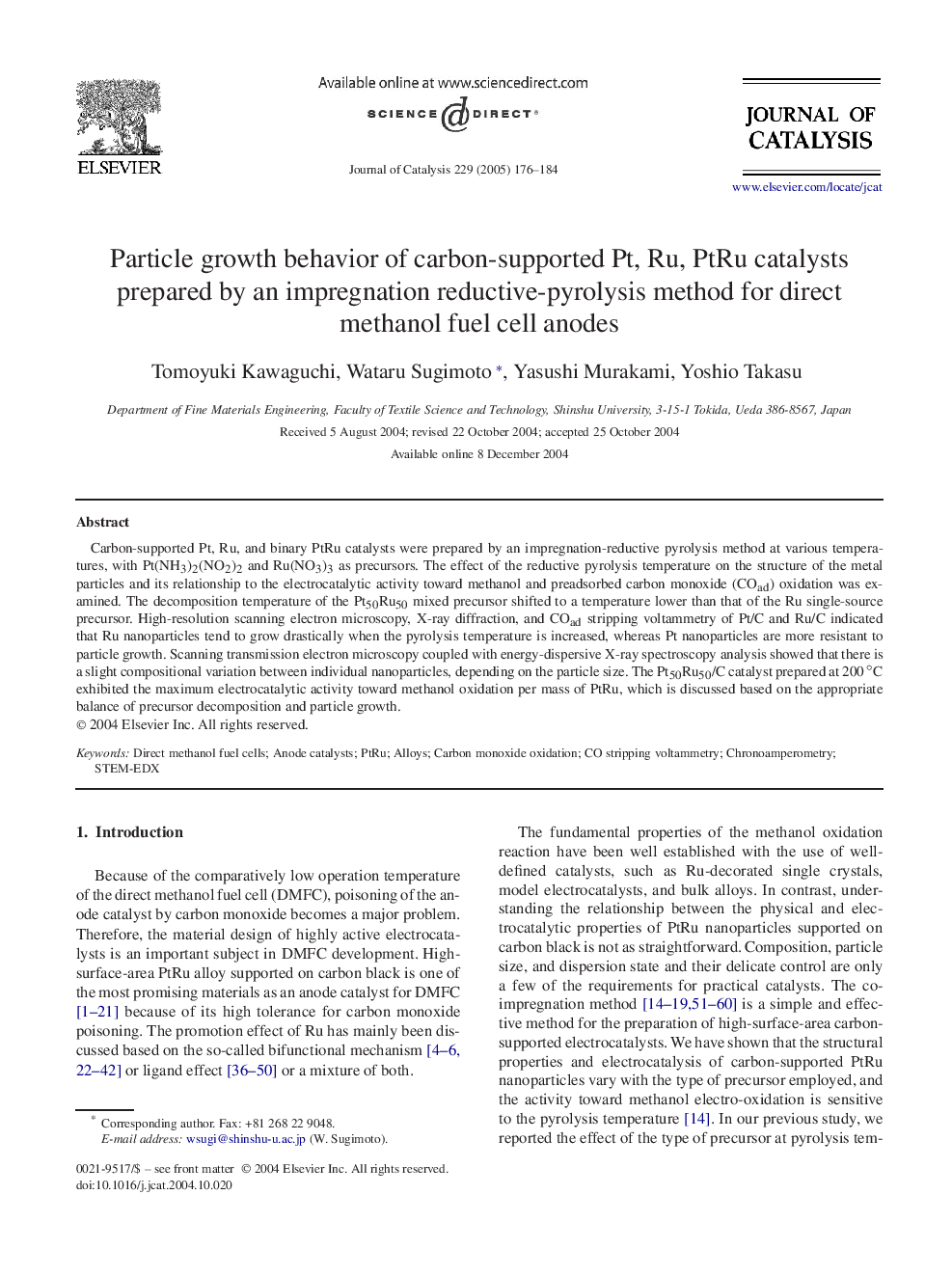| Article ID | Journal | Published Year | Pages | File Type |
|---|---|---|---|---|
| 10245122 | Journal of Catalysis | 2005 | 9 Pages |
Abstract
Carbon-supported Pt, Ru, and binary PtRu catalysts were prepared by an impregnation-reductive pyrolysis method at various temperatures, with Pt(NH3)2(NO2)2 and Ru(NO3)3 as precursors. The effect of the reductive pyrolysis temperature on the structure of the metal particles and its relationship to the electrocatalytic activity toward methanol and preadsorbed carbon monoxide (COad) oxidation was examined. The decomposition temperature of the Pt50Ru50 mixed precursor shifted to a temperature lower than that of the Ru single-source precursor. High-resolution scanning electron microscopy, X-ray diffraction, and COad stripping voltammetry of Pt/C and Ru/C indicated that Ru nanoparticles tend to grow drastically when the pyrolysis temperature is increased, whereas Pt nanoparticles are more resistant to particle growth. Scanning transmission electron microscopy coupled with energy-dispersive X-ray spectroscopy analysis showed that there is a slight compositional variation between individual nanoparticles, depending on the particle size. The Pt50Ru50/C catalyst prepared at 200â°C exhibited the maximum electrocatalytic activity toward methanol oxidation per mass of PtRu, which is discussed based on the appropriate balance of precursor decomposition and particle growth.
Keywords
Related Topics
Physical Sciences and Engineering
Chemical Engineering
Catalysis
Authors
Tomoyuki Kawaguchi, Wataru Sugimoto, Yasushi Murakami, Yoshio Takasu,
